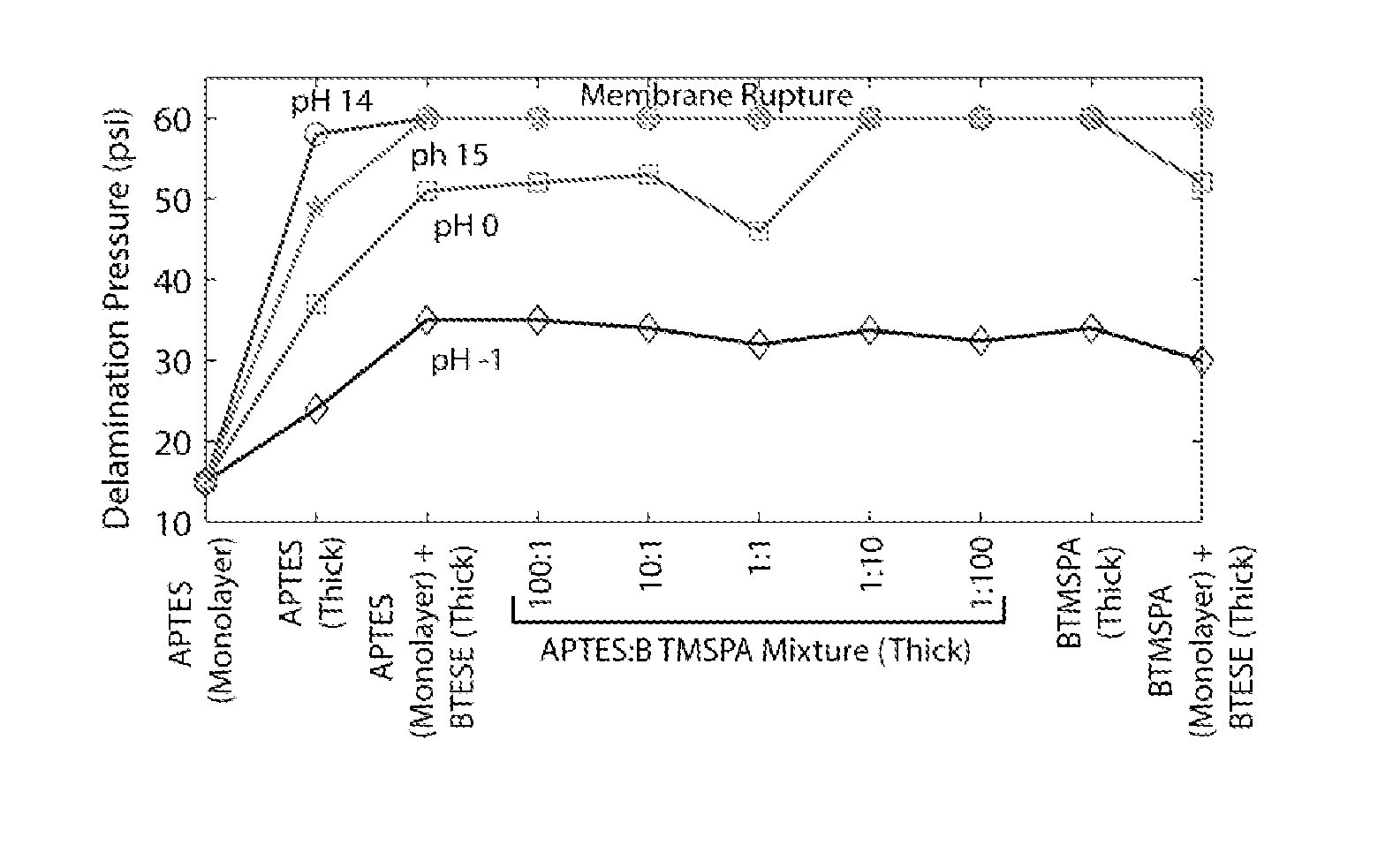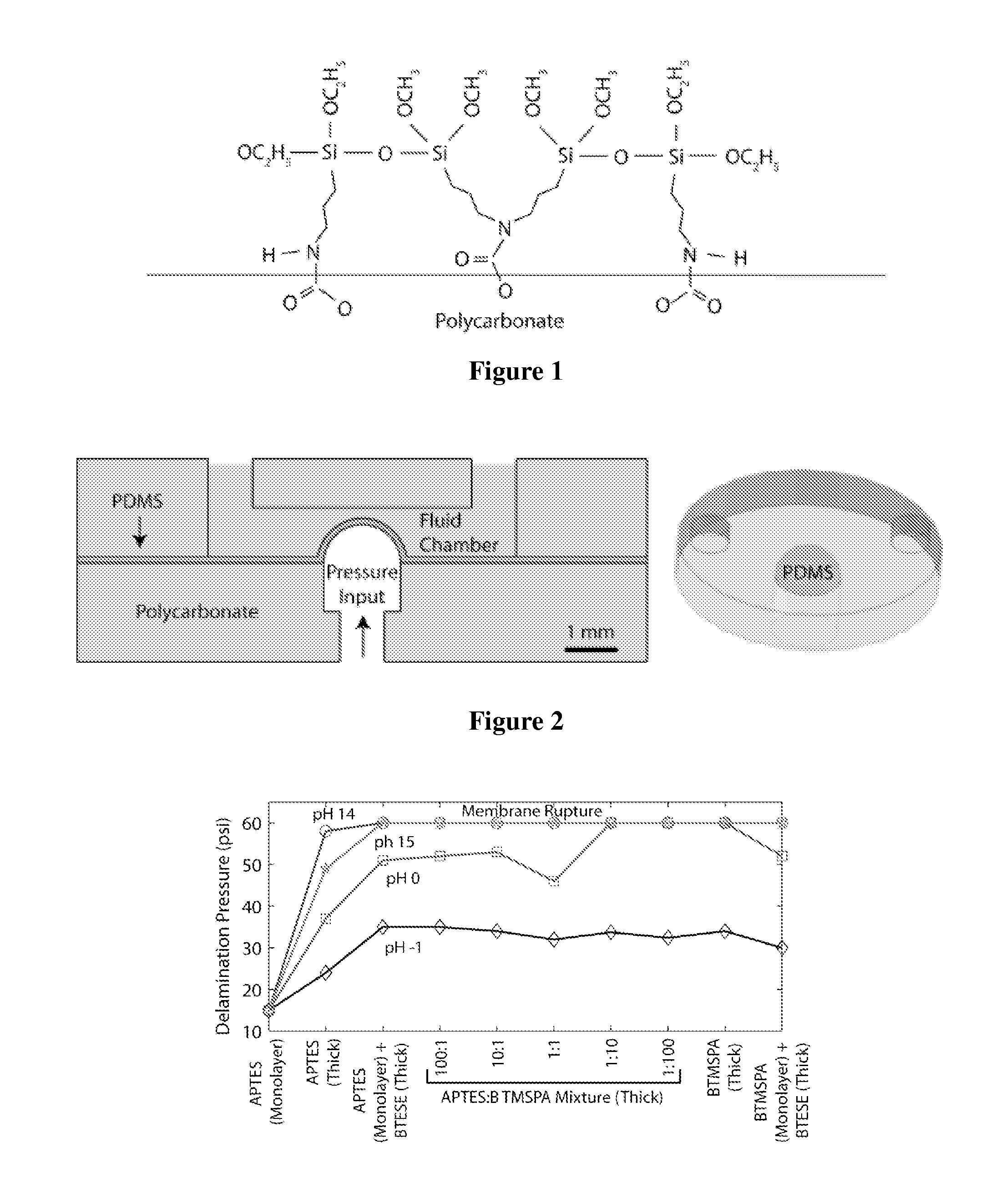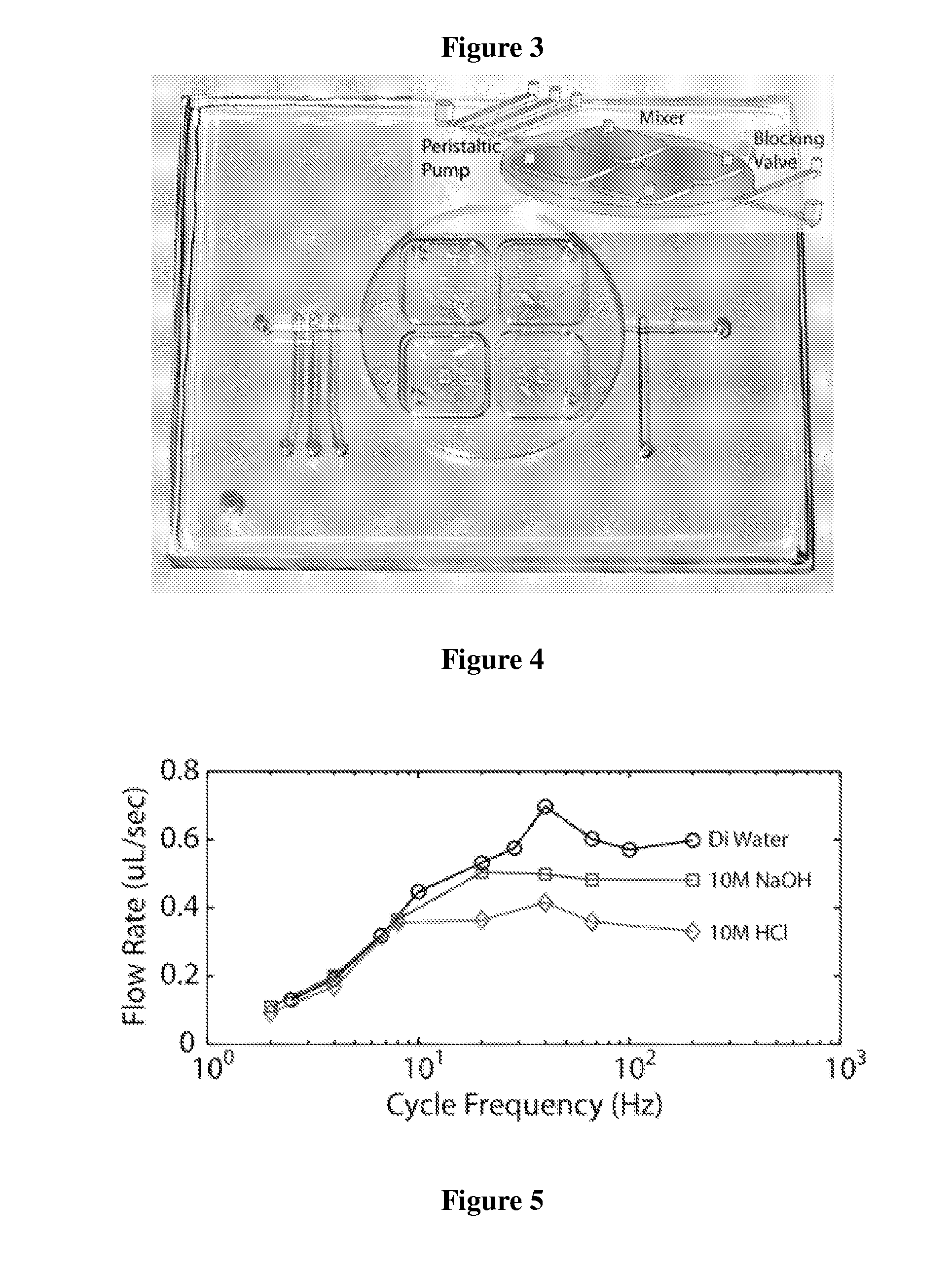Method of hydrolytically stable bonding of elastomers to substrates
- Summary
- Abstract
- Description
- Claims
- Application Information
AI Technical Summary
Benefits of technology
Problems solved by technology
Method used
Image
Examples
example 1
A Molecule Comprising Two Silane-Derivative Groups for Enhanced Bonding of Elastomer to Plastic
[0163]Two molecules containing bis-silanes derivatives were investigated for improving bond strength: BisTriEthoxySilylEthane (BTESE) and Bis(TriMethoxySilylPropyl)Amine (BTMSPA). For BTESE, primers consisted of a two step process, wherein a molecule bearing one functional silane-derivative was first coated onto the plastic substrate for covalent bonding. This step was followed by coating with BTESE. Separately, in a one step coating process, a mixture of two molecules was used. The mixture contained one molecule bearing one functional silane-derivative and one molecule bearing two-functional silane-derivative molecule. The molecule bearing one silane-derivative was APTES and the molecule bearing two silane-derivative was Bis(TriMethoxySilylPropyl)Amine (BTMSPA). Coating a substrate by this mixture resulted in a thick single step coating. The coating layers were explored for its effects on...
PUM
| Property | Measurement | Unit |
|---|---|---|
| Temperature | aaaaa | aaaaa |
| Time | aaaaa | aaaaa |
| Time | aaaaa | aaaaa |
Abstract
Description
Claims
Application Information
 Login to View More
Login to View More - R&D
- Intellectual Property
- Life Sciences
- Materials
- Tech Scout
- Unparalleled Data Quality
- Higher Quality Content
- 60% Fewer Hallucinations
Browse by: Latest US Patents, China's latest patents, Technical Efficacy Thesaurus, Application Domain, Technology Topic, Popular Technical Reports.
© 2025 PatSnap. All rights reserved.Legal|Privacy policy|Modern Slavery Act Transparency Statement|Sitemap|About US| Contact US: help@patsnap.com



